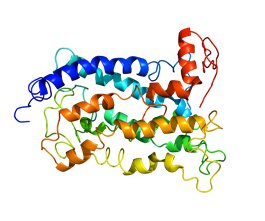
August 4, 2014, by Editor
Pharmacy School Research Blog – August 2014
This week’s blog has been provided by Dr Jonas Emsley, our Research Director in the School of Pharmacy:
Dear All
This is the first Pharmacy School Research Blog which will contain updates from our research activity including all the developments on big papers published, big grants awarded and exciting new international links developed between Nottingham and other exotic parts of the world.
Internationalisation update – Links with Brazil from Barrie Kellam.
An exciting new collaboration between the University of Nottingham and Brazilian research groups specialising in Drug Discovery has been recently established. The University of Nottingham, will be contributing facilities, equipment and other technical expertise to undertake drug discovery projects with institutions and Brazilian centres qualified for the program, thereby supporting development of projects centred around basic and applied research in the development of new medicines and related products, and training highly qualified human resources in this area.
Research funding success – new MRC grant awarded to Mike Stocks
Title: The synthesis and evaluation of new fluorescent-labelled P2Y2 receptor chemical probes.
Cell signalling is a vital and integral part of all life and controls the inner workings of organisms allowing them to respond, adapt and survive. This MRC project will ultimately address fundamental questions within cell signalling research of how to visualise and finely tune a biological receptor’s response. Membrane-bound P2-receptors mediate the actions of extracellular nucleotides in cell-to-cell signalling and P2Y-receptors belong to the superfamily of G-protein-coupled receptors (GPCRs). The synthesis of high affinity P2Y2R antagonist ligands discovered in this programme will be used to probe the biological potential of P2Y2R antagonists in unmet disease states and the fluorescent high affinity P2Y2R antagonist probes will be used to establish novel high-throughput biological assays to enable future scree3ning of this important receptor. The application was for £624K awarded together with Steve Hill and Barrie Kellam so congratulations to all three on this successful grant.
Pharmacy research update
Welcome to the update of research and the link below gives you access to the latest edition of the School of Pharmacy Journal, a collection of publications and press releases from March to April collated by Gail Atkinson.
In a major breakthrough in stem cell manufacturing technology
scientists within the group of Professor Kevin Shakesheff have developed a new substance which could simplify the manufacture of cell therapy in the pioneering world of regenerative medicine. This work was published in PNAS (2014) 111: 5580-5585. Professor Kevin Shakesheff said “Our new combination of hydrogels is a first. It allows dense tissue structures to be produced from human pluripotent stem cells (HPSC) in a single step process never achieved before. The discovery has important implications for the future of manufacturing in regenerative medicine. This field of healthcare is a major priority for the UK and we are seeing increasing investment in future manufacturing processes to ensure we are ready to deliver real treatments to patients when HPSC products and treatments go to trial and become standard.” The work was funded by the EPSRC Centre for Innovative Manufacturing for Regenerative Medicine in which The University of Nottingham is a partner. The centre brings together experts in stem cell biology, materials science, pharmaceutical sciences and manufacturing. In addition Professor Kevin Shakesheff has been given one of the first ever RISE awards by the Engineering and Physical Sciences Research Council (EPSRC) and Royal Academy of Engineering. The awards are brand new and were set up to recognise the leading scientists and engineers of the UK in this 20th anniversary year of the EPSRC.
One of the most important human receptor families, from a drug discovery and development perspective, is the GPCR family. In the area of chemical biology and membrane GPCR receptor research two papers were published in the journal “British Journal of Pharmacology” (2014) 171: 1102-1113, 171: 1073-1084 from the group of Barrie Kellam and Steve Hill describing the use of fluorescent-conjugates as a toolbox for visualisation of GPCRs at the single cell level.
Advances in macromolecular crystallography and gene regulation research
have also come from two papers in the area of post translational modifications. In a breakthough article in Nucleic Acids Research (2014) 42: 822-835 the group of Ingrid Dreveny and David Heery reported for the first time that MOZ DPF induces α-helical conformation in the histone tail H3K4-T11, revealing a unique mode of histone H3 recognition. This data provides the first observation of extensive helical structure in a histone tail, revealing the inherent ability of the H3 tail to adopt alternate conformations in complex with chromatin regulators affecting gene regulation. In a second paper the group of Ingrid Dreveny report the crystal structure of a Structure and Catalytic Regulatory Function of Ubiquitin Specific Protease 11 N-Terminal and Ubiquitin-like Domains Biochemistry, 2014, 53 (18), pp 2966–2978. This enzyme regulates vital signaling pathways in the nucleus and is implicated in DNA damage repair.
Yours Jonas
Dr Jonas Emsley
Research Director, School of Pharmacy,
Professor of Macromolecular Crystallography,
Division of Medicinal Chemistry & Structural Biology,
Centre for Biomolecular Sciences,
School of Pharmacy,
University of Nottingham,



DNA damage and repair store the organism’s genetic information in the survival and reproduction of human beings. So it is essential for cell to maintain the integrity of the DNA molecule.